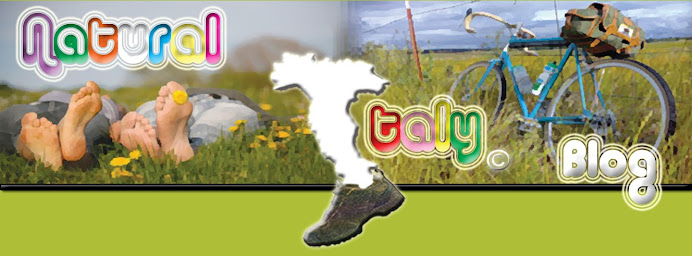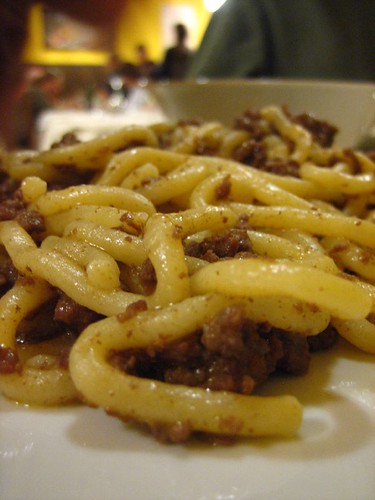
by Jill A. Benik
Many of us moms here in Florence find it overwhelming to be not only pregnant....but also figuring out the bureaucratic interworkings of giving birth in Italy. Many of us probably never thought was looming beyond the actual birth process...so let's get started!
1. How many days to I stay in the hospital after giving birth? The number of days normally depends on the hospital. The average length is 2 days after a normal natural birth, c-sections are around 3 days. The Italian healthcare system wants to make sure moms are sent home healthy with healthy babies so they may keep you longer than you would like in order to be more sure!
2. What will I need to bring to the hospital? You will need to bring all of your things that you would bring if you were staying somewhere on vacation, i.e. Pj's, toothbrush, napkins...etc. On top of this you will need to bring your own silverware and cup. Most Italian hospitals don't have in-room entertainment...so something to read or watch is always nice! I found them to be very noisy so I was glad I had some ear plugs in my bag! You will also need your ID, your blood tests, and any other relevant medical papers. The baby's father will need to bring relevant documents to register for the baby's birth certificate. Your baby must be registered no later than 3 days after the birth. This is done at the hospital and you can make an appointment normally in the maternity ward of the hospital.
3. So I've been released from the hospital--now what? At the hospital you will pick your pediatrician. A little bit of research should be done before you get to the hospital to ensure you aren't without one! You will also get a booklet that is good for all of the baby's visits to the pediatrician until they are 12. This booklet will have a list of appointments and vaccines the baby will need! Make sure you make the vaccine appointments as soon as possible! Sometimes they are completely booked for up to 3 months! Call the CUP in your area for appointments, as vaccine appointments must be made on the phone. 840.003.003 from landlines and 199.175.955 from cell phones Your pediatrician will also talk to you about your baby having a sonogram. This sonogram is of the hip joints and is a precautionary visit to verify that the legs are developing properly. The visit must be done before the baby is 3 months old. This visit must be done at MEYER and can be reserved only at the CUP for MEYER. The visit is around €35.
4. What visits will I need for myself? I was shocked at how I was left on my own after I had given birth. When I was pregnant I saw the doctor a couple of times a month. After you give birth you will need to make an appointment at the gynecologist for a check up. Things can get really busy after the baby is born...so if you think about it, make an appointment for a month or so after your due date. That way you won't have to think about it later.
5. Are there any support groups for new moms? If you didn't take any pre-birth courses, don't worry! I highly recommend the courses before birth if you can...but sometimes it isn't possible. Many of the area clinics have meetings once a month for all of the moms to share stories and to talk to the obstetrician. I found these meetings very useful because it was nice to know someone was going through exactly the same thing I was! In fact, the women from my course set a weekly meeting to go walking with our strollers and share stories!
6. I want to take my baby home for a visit, what do I need to do? If you want to travel outside of Italy...or even on a plane inside Italy you will need to wait for a few things. First, you will need the baby's birth certificate. The birth certificate is available at the commune in which you are a resident after about 2 months. They will send you a letter in the mail when it is ready. If you have to leave earlier you will have to go to the commune and fill out a form to have the service expedited! Once you have the birth certificate you will need 4 photographs with the babies eyes open and a white background. Normally they will put a white cardboard in your lap so the parent is not visible in the photos. Take these photos to the comune and have them verified as originals of the baby. Once the photos have been verified you will need to go to a police stations and fill out a form for a 'lascia passare'. They will verify the ID's of the parents and then make an ID form. This will normally be ready in 8 days. You will need a lot of patience for this process as the police officers have a lot on their plate! Don't take it personal if they aren't the most friendly. Once you have the form you will be able to travel within the EU with this document. If you are traveling outside of the EU you will need a passport. See your embassy websites for more information.
Can my baby have dual citizenship if they are born in Italy? If one of the parent's is Italian the baby will have Italian citizenship...if not...they won't unless there is a special arrangement between the two governments for special circumstances, i.e. Children of military and diplomats.
FOR AMERICANS ONLY: If you would like your child to share your citizenship and either the mother or father is American already this is what you have to do...1.collect 2 copies of the baby's Italian birth certificate, the id of the Amercian parent-with proof of 6 years of residence in the U.S.-4 of which were over the age of 14, official marriage certificate of the parents(not needed if the parents are unwed but will need a sworn affidavit to the paternity of the child), completed form DS-2029, and your social security number. 2. Make an appointment at the consulate to bring your baby in. If you are married you will need to bring your spouse. 3.Have $110 on hand, or the equivalent in euro. It is better to have a check, but they do accept euros. Don't bring your credit card, they won't take it! 4. After about a week the certificate will be ready, so you can pick it up or have it sent to your house! Sending it will cost more!
I hope I have covered everything! Remember, having a baby is overwhelming and you're not alone! Being a mom is great and once you get everything figured out you'll find out it's much easier! Good Luck!





